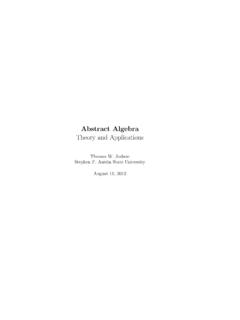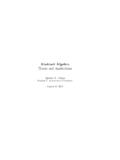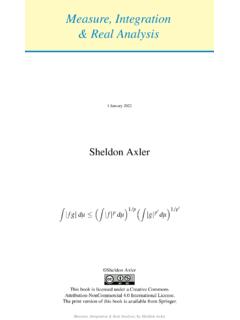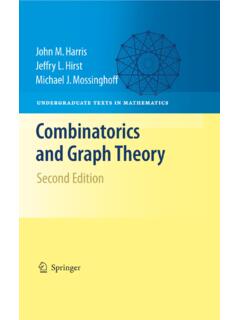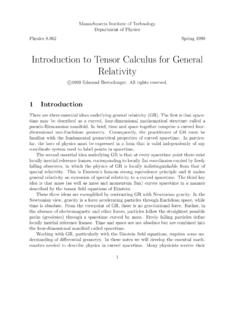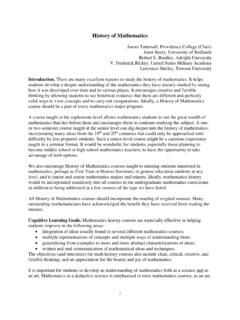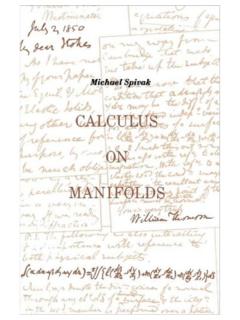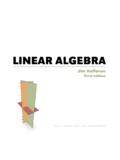Transcription of Abstract Algebra - UPS
1 Abstract AlgebraTheory and ApplicationsAbstract AlgebraTheory and ApplicationsThomas W. JudsonStephen F. Austin State UniversitySage Exercises for Abstract AlgebraRobert A. BeezerUniversity of Puget SoundAugust 12, 2015 1997 2015 Thomas W. Judson, Robert A. BeezerPermission is granted to copy, distribute and/or modify this document under the termsof the GNU Free Documentation License, Version or any later version published bythe Free Software Foundation; with no Invariant Sections, no Front-Cover texts , and noBack-Cover texts . A copy of the license is included in the appendix entitled GNU FreeDocumentation License. AcknowledgementsI would like to acknowledge the following reviewers for their helpful comments and sugges-tions. David Anderson, University of Tennessee, Knoxville Robert Beezer, University of Puget Sound Myron Hood, California Polytechnic State University Herbert Kasube, Bradley University John Kurtzke, University of Portland Inessa Levi, University of Louisville Geoffrey Mason, University of California, Santa Cruz Bruce Mericle, Mankato State University Kimmo Rosenthal, Union College Mark Teply, University of WisconsinI would also like to thank Steve Quigley, Marnie Pommett, Cathie Griffin, Kelle Karshick,and the rest of the staff at PWS Publishing for their guidance throughout this project.
2 Ithas been a pleasure to work with Beezer encouraged me to makeAbstract Algebra : Theory and Applicationsavail-able as an open source textbook, a decision that I have never regretted. With his assistance,the book has been rewritten in MathBook XML ( ), mak-ing it possible to quickly output print, web, PDF versions and more from the same open source version of this book has received support from the National Science Foun-dation (Award #DUE-1020957).vPrefaceThis text is intended for a one or two-semester undergraduate course in Abstract , these courses have covered the theoretical aspects of groups, rings, and , with the development of computing in the last several decades, applications thatinvolve Abstract Algebra and discrete mathematics have become increasingly important,and many science, engineering, and computer science students are now electing to minor inmathematics. Though theory still occupies a central role in the subject of Abstract algebraand no student should go through such a course without a good notion of what a proof is, theimportance of applications such as coding theory and cryptography has grown recently most Abstract Algebra texts included few if any applications.
3 However,one of the major problems in teaching an Abstract Algebra course is that for many students itis their first encounter with an environment that requires them to do rigorous proofs. Suchstudents often find it hard to see the use of learning to prove theorems and propositions;applied examples help the instructor provide text contains more material than can possibly be covered in a single there is adequate material for a two-semester course, and perhaps more; however,for a one-semester course it would be quite easy to omit selected chapters and still have auseful text. The order of presentation of topics is standard: groups, then rings, and finallyfields. Emphasis can be placed either on theory or on applications. A typical one-semestercourse might cover groups and rings while briefly touching on field theory, using Chapters 1through 6, 9, 10, 11, 13 (the first part), 16, 17, 18 (the first part), 20, and 21.
4 Parts ofthese chapters could be deleted and applications substituted according to the interests ofthe students and the instructor. A two-semester course emphasizing theory might coverChapters 1 through 6, 9, 10, 11, 13 through 18, 20, 21, 22 (the first part), and 23. Onthe other hand, if applications are to be emphasized, the course might cover Chapters 1through 14, and 16 through 22. In an applied course, some of the more theoretical resultscould be assumed or omitted. A chapter dependency chart appears below. (A broken lineindicates a partial dependency.)viviiChapter 23 Chapter 22 Chapter 21 Chapter 18 Chapter 20 Chapter 19 Chapter 17 Chapter 15 Chapter 13 Chapter 16 Chapter 12 Chapter 14 Chapter 11 Chapter 10 Chapter 8 Chapter 9 Chapter 7 Chapters 1 6 Though there are no specific prerequisites for a course in Abstract Algebra , studentswho have had other higher-level courses in mathematics will generally be more preparedthan those who have not, because they will possess a bit more mathematical , we shall assume some basic linear Algebra ; that is, we shall take for granted anelementary knowledge of matrices and determinants.
5 This should present no great problem,since most students taking a course in Abstract Algebra have been introduced to matricesand determinants elsewhere in their career, if they have not already taken a sophomore orjunior-level course in linear sections are the heart of any mathematics text. An exercise set appears at theend of each chapter. The nature of the exercises ranges over several categories; computa-tional, conceptual, and theoretical problems are included. A section presenting hints andsolutions to many of the exercises appears at the end of the text. Often in the solutionsa proof is only sketched, and it is up to the student to provide the details. The exercisesrange in difficulty from very easy to very challenging. Many of the more substantial prob-lems require careful thought, so the student should not be discouraged if the solution is notforthcoming after a few minutes of are additional exercises or computer projects at the ends of many of the computer projects usually require a knowledge of programming.
6 All of these exercisesand projects are more substantial in nature and allow the exploration of new results ( ) is a free, open source, software system for advanced mathematics ,which is ideal for assisting with a study of Abstract Algebra . Sage can be used either onyour own computer, a local server, or on SageMathCloud ( ).Robert Beezer has written a comprehensive introduction to Sage and a selection of relevantexercises that appear at the end of each chapter, including live Sage cells in the web versionviiiof the book. The Sage code has been tested for accuracy with the most recent versionavailable at this time: Sage Version (released 2015-07-26).Thomas W. JudsonNacogdoches, Texas 2015 ContentsAcknowledgementsvPrefacevi1 A Short Note on Proofs.. Sets and Equivalence Relations.. Exercises.. References and Suggested Readings..152 The Mathematical Induction.. The Division Algorithm.
7 Exercises.. Programming Exercises.. References and Suggested Readings..273 Integer Equivalence Classes and Symmetries.. Definitions and Examples.. Subgroups.. Exercises.. Additional Exercises: Detecting Errors.. References and Suggested Readings..444 Cyclic Cyclic Subgroups.. Multiplicative Group of Complex Numbers.. The Method of Repeated Squares.. Exercises.. Programming Exercises.. References and Suggested Readings..575 Permutation Definitions and Notation.. Dihedral Groups.. Exercises..68ixxCONTENTS6 Cosets and Lagrange s Cosets.. Lagrange s Theorem.. Fermat s and Euler s Theorems.. Exercises..767 Introduction to Private Key Cryptography.. Public Key Cryptography.. Exercises.. Additional Exercises: Primality and Factoring.. References and Suggested Readings..878 Algebraic Coding Error-Detecting and Correcting Codes.. Linear Codes.
8 Parity-Check and Generator Matrices.. Efficient Decoding.. Exercises.. Programming Exercises.. References and Suggested Readings..1099 Definition and Examples.. Direct Products.. Exercises..11810 Normal Subgroups and Factor Factor Groups and Normal Subgroups.. The Simplicity of the Alternating Group.. Exercises..12811 Group Homomorphisms.. The Isomorphism Theorems.. Exercises.. Additional Exercises: Automorphisms..13712 Matrix Groups and Matrix Groups.. Symmetry.. Exercises.. References and Suggested Readings..15313 The Structure of Finite Abelian Groups.. Solvable Groups.. Exercises.. Programming Exercises.. References and Suggested Readings..163 CONTENTSxi14 Group Groups Acting on Sets.. The Class Equation.. Burnside s Counting Theorem.. Exercises.. Programming Exercise.. References and Suggested Reading..17715 The Sylow The Sylow Theorems.
9 Examples and Applications.. Exercises.. A Project.. References and Suggested Readings..18616 Rings.. Integral Domains and Fields.. Ring Homomorphisms and Ideals.. Maximal and Prime Ideals.. An Application to Software Design.. Exercises.. Programming Exercise.. References and Suggested Readings..20617 Polynomial Rings.. The Division Algorithm.. Irreducible Polynomials.. Exercises.. Additional Exercises: Solving the Cubic and Quartic Equations..22218 Integral Fields of Fractions.. Factorization in Integral Domains.. Exercises.. References and Suggested Readings..23819 Lattices and Boolean Lattices.. Boolean Algebras.. The Algebra of Electrical Circuits.. Exercises.. Programming Exercises.. References and Suggested Readings..25220 Vector Definitions and Examples.. Subspaces.. Linear Independence.. Exercises.. References and Suggested Readings..26121 Extension Fields.
10 Splitting Fields.. Geometric Constructions.. Exercises.. References and Suggested Readings..28022 Finite Structure of a Finite Field.. Polynomial Codes.. Exercises.. Additional Exercises: Error Correction for BCH Codes.. References and Suggested Readings..29423 Galois Field Automorphisms.. The Fundamental Theorem.. Applications.. Exercises.. References and Suggested Readings..312A GNU Free Documentation License313 Hints and Solutions to Selected Exercises321 Notation333 Index3361 PreliminariesA certain amount of mathematical maturity is necessary to find and study applicationsof Abstract Algebra . A basic knowledge of set theory, mathematical induction, equivalencerelations, and matrices is a must. Even more important is the ability to read and understandmathematical proofs. In this chapter we will outline the background needed for a course inabstract A Short Note on ProofsAbstract mathematics is different from other sciences.
